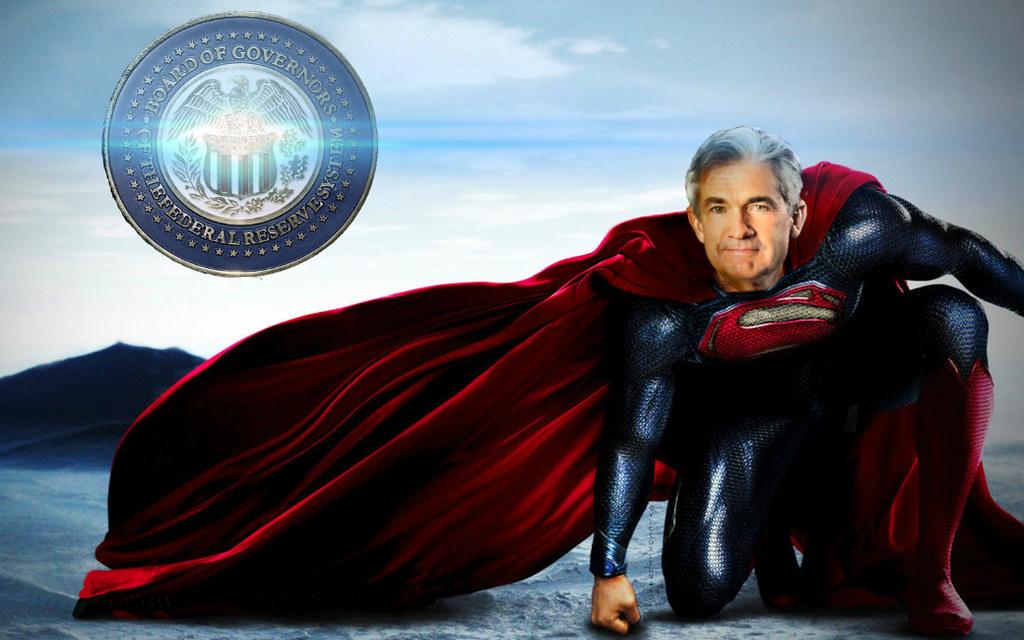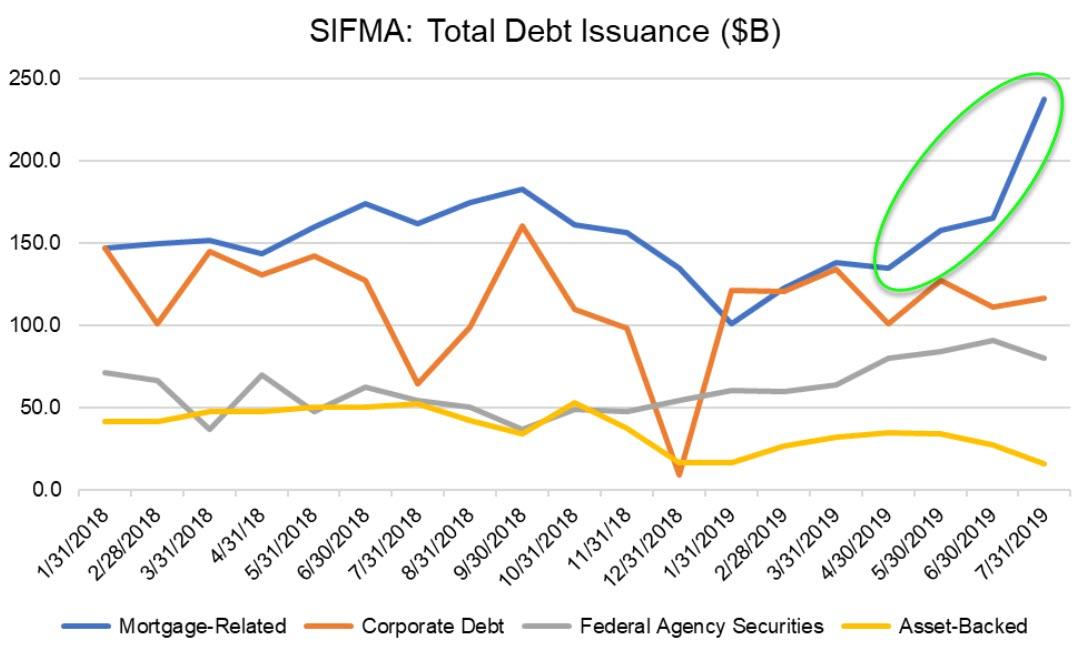Authored by Chris Whalen via TheInstitutionalRiskAnalyst.com,
The conversations over the Labor Day weekend at Leen’s Lodge ranged from negative interest rates to the efficacy of a bubble gum colored wacky worm vs live bait in late season bass fishing. We’ve mostly decided that a large mouth bass raised in Maine tastes about as good as small mouth bass when flash fried over an open fire.
Confirming that quality trumps quantity, we proved empirically that a single issue of Grant’s Interest Rate Observer, supplemented with a few pine cones, is a superior fire starting accelerant than a whole section of The Financial Timesor The Wall Street Journal.
One major point of consensus view is that the global investment community needs to stop asking central banks to address issues for which they are neither suited professionally or politically. The spectacle of former New York Fed President William Dudley exhorting his former colleagues on the Federal Open Market Committee to resist President Trump was pathetic and sad, yet another faux pas for the Fed of New York this year.
The Dudley rant illustrates the collective madness that has consumed many observers over the past decade. In truth, the crisis of 2008 still has not been resolved. Dudley wrote:
“There’s even an argument that the election itself falls within the Fed’s purview. After all, Trump’s reelection arguably presents a threat to the U.S. and global economy, to the Fed’s independence and its ability to achieve its employment and inflation objectives.”
Really? Dudley displays the dangerous “I am Superman” complex we wrote about in 2010, a virus that has infected the Federal Reserve System over the past two decades. Mission creep does not begin to describe the pathology of the madness that makes Fed officials think themselves omniscient. We challenge Dudley to point to a section of the Federal Reserve Act than authorizes the political activity he suggests.
These ill-considered comments hurt the Fed and Dudley both, pulling them into the political mosh pit that prudent central bankers rightly avoid. And Dudley’s transparent publicity stunt detracts from the more important question, namely how the US can manage its financial markets in a world caught in a deflationary spiral.
On the question of US markets and negative interest rates, we see the possibility that government bonds and agency securities could trade down to the zero bound, but the private bond and asset backed securities markets in the US are unlikely to follow. Notice in the chart below from FRED that even as the 10-year Treasury note has fallen in yield, the rate on the 30-year mortgage has leveled off.
Europe and Asia are largely bank-centric economies, thus it is relatively easy for the European Central Bank or Bank of Japan to impose negative rates by fiat. In the US, on the other hand, the size and diversity of the non-bank securities markets will defy such bureaucratic direction. No rational private investor will fund a US residential mortgage at a negative yield. Managers of whatever stripe are not paid to lose money.
For US banks, the prospect of zero or negative yields on government and agency securities represents a dire threat and illustrates the idiocy of negative interest rates as a deliberate public policy. Banks, pensions and other private institutional reservoirs of savings die in a low or no interest rate environment. How is this helpful to promoting growth?
We note that the Germans are in the process of mounting a legal challenge to the ECB’s negative rate policy. And significantly, with the ECB’s deposit rate hovering at negative 0.4%, incoming ECB chief Christine Legarde says that negative rates have helped Europe more than they’ve hurt and that more may be necessary. Legarde wrote last week:
“On the one hand, banks may decide to pass the negative deposit rate on to depositors, lowering the interest rates the latter get on their savings. On the other hand, the same depositors are also consumers, workers, and borrowers. As such they benefit from stronger economic momentum, lower unemployment and lower borrowing costs. All things considered, in the absence of the unconventional monetary policy adopted by the ECB – including the introduction of negative interest rates – euro area citizens would be, overall, worse off.”
We’ve always liked Legarde as a relative hawk on bank solvency in Europe, but she is badly mistaken on negative rates. Lagarde is the paragon of the status quo and reflects conventional economic thinking. Like her counterparts in the US, Legarde repeats the nonsense that negative rates actually encourage credit creation and consumption, when if fact most of the historical correlations between interest rates and consumption have long ago broken down.
Witness the fact that the US mortgage market has not grown during a decade of low interest rates. As we wrote in National Mortgage News in July (“Affordability, the FOMC, and the broken link between rates and housing credit“): “As with the once trusted connection between employment and inflation, the tie between interest rates and housing credit seems broken.” If anything, negative rates seem to feed caution by consumers and a flight to quality among global investors even as global stock indices hit new astounding highs.
As head of the International Monetary Fund, Legarde had the temerity to call for the recapitalization of European banks at Jackson Hole in 2011. But most of her work at the IMF, most notably with Argentina and Greece, involved window dressing two bad situations that require debt restructuring. Now as she joins the ECB, Legarde must address both bank solvency in the EU generally and eventual debt restructuring in Italy post-Brexit. As the FT notes, watching Argentina head towards its tenth debt default after the largest bailout in IMF history is unlikely to enhance Lagarde’s credibility as ECB chief.
Another point of conversation at Leen’s was the future direction of interest rates in the US. The narrative coming from the financial media says that rates are sinking to zero and beyond, but we reminded the collected pundits that these same analysts were calling for three rate cuts by the FOMC this year. We reminded our colleagues that the Treasury’s General Refunding will be huge in the second half of 2019. The Treasury announced on July 29th:
“During the July – September 2019 quarter, Treasury expects to borrow $433 billion in privately-held net marketable debt, assuming an end-of-September cash balance of $350 billion. The borrowing estimate is $274 billion higher than announced in April 2019. The increase in borrowing is primarily driven by changes in cash balance assumptions.”
Of note, during the April – June 2019 quarter, Treasury borrowed only $40 billion in privately-held net marketable debt. In July, however, total issuance rose to $350 billion in that month alone. But despite this new issuance, Treasury yields continue to fall even as mortgage interest rates stabilize around 4%.
For the moment, yields are falling and corporate bond spreads are tightening, but on flat to down volume in terms of new issuance. New asset backed issuance has been down for almost a year and corporate issuance is flat. Note that mortgage related securities issuance has spiked upward since May, driving monthly underwriting volumes to levels not seen in ten years. Of note, the SIFMA data for April-June for mortgage issuance has been revised upward, suggesting that the industry will have a good year after several years of misery.
Recall that back before last Thanksgiving, banks and investors were tweaking their strategies to become more asset sensitive on the assumption that yields on bonds and loans were headed higher. Now the opposite is the case, at least if you base your view on the conventional wisdom. We’ll be addressing this issue in greater detail in the next edition of The IRA Bank Book.
With the FOMC solving the liquidity squeeze on the short end of the yield curve by ending the shrinkage of the Fed’s balance sheet, the focus is now on 2s-10s. There is a case to be made that Treasury and agency markets are over-bought, suggesting the possibility of a correction between now and Turkey Day 2019. Hang tough out there in credit land. The volatility roller coaster may not nearly be done.
via ZeroHedge News https://ift.tt/2NOHjQy Tyler Durden


